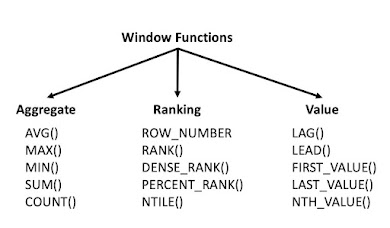Resources for Data Science and AI
Many of data science enthusiasts are keep asking on resources to upskill to data science and AI. To learn Data science and AI, you can refer the below courses and books:
Courses
📌 (Beginner) - Udacity - Intro to Machine Learning
📌 (Intermediate) - Coursera - Deep Learning Specialization
📌 (Advanced) - Coursera/UdacityUpgrad for specific courses on HCI, NLP, Reinforcement Learning, Computer Vision
Pet Projects
📌 https://www.kaggle.com/
📌 https://lnkd.in/gQ5cfG5T
📌 https://machinehack.com/
Books (Top 5 Favs)
1. Practical Statistics for Data Scientists: 50+ Essential Concepts Using R and Python
2. Advances in Financial Machine Learning
3. Reinforcement Learning - Sutton
4. Prediction Machines: The Simple Economics of Artificial Intelligence
5. Trustworthy AI: A Business Guide for Navigating Trust and Ethics in AI
Free Books
1- Data Science at the Command Line by Jeroen Janssens: https://lnkd.in/gbjdkW9M
2- Deep Learning on Graphs by Yao Ma and Jiliang Tang: https://lnkd.in/g3g-puib
3- Hands-on Machine Learning with Scikit-learn, Keras and Tensorflow by Aurelien Geron: https://lnkd.in/gzeASHUd
4- Practical Statistics for Data Science by Peter Bruce & Andrew Bruce https://lnkd.in/gfUUfb6K
5-An Introduction to Statistical Learning by Gareth James, Daniela Witten, Trevor Hastie, and Robert Tibshirani: https://lnkd.in/eBCkgBS
6-Learning Deep Architectures for AI by Yoshua Bengio: https://lnkd.in/gHNKMzE2
7- Python for Data Science Handbook by Jake VanderPlas: https://lnkd.in/bxTAdNY
8- The Hundred-Page Machine Learning Book by Andriy Burkov:https://lnkd.in/gdbbUuPH
9- A Course in Machine Learning by Hal Daumé III: https://lnkd.in/gDr2C7qi
10- Intuitive ML and Big Data in C++, Scala, Java, and Python by Kareem Alkaseer: https://lnkd.in/eVanhXm
11- Python Notes for Professionals book: https://lnkd.in/g2cNnFjJ
12- Learning Pandas https://lnkd.in/gM9C2BvN
13- Machine Learning - A First Course for Engineers and Scientists by Andreas Lindholm, Niklas Wahlström, Fredrik Lindsten, and Thomas B. Schön: https://lnkd.in/gzuNxKi3
14- Dive into Deep Learning by Aston Zhang, Zachary C. Lipton, Mu Li, and Alexander J. Smola: https://d2l.ai/d2l-en.pdf
15- A Comprehensive Guide to Machine Learning Soroush Nasiriany, Garrett Thomas, William Wang, Alex Yang, Jennifer Listgarten, Anant Sahai: https://lnkd.in/gp3AKgMY
16- SQL Notes for Professionals book: https://lnkd.in/g5dNZCuD
17-Algorithms Notes for Professionals book: https://lnkd.in/eX6YkWv
18- Deep Learning Interviews: Hundreds of fully solved job interview questions from a wide range of key topics in AI by Shlomo Kashani, Amir Ivry: https://lnkd.in/gMFVTbrn
19- Understanding Machine Learning: From Theory to Algorithms by Shai Shalev-Shwartz and Shai Ben-David : https://lnkd.in/gEJGTfB7
20. Data Science Interview Questions: kojino-interview-questions
More books: https://lnkd.in/gPNmRcdV









.jpg)

1. Alexey Grigorev's Data Science Interviews GitHub repo:
https://lnkd.in/gC9CC3SQ
2. The 9-Day Data Science Interview Crash Course
(has 27 FAANG problems sent over 9 emails)
https://lnkd.in/dPMR-NdF
3. Chip Huyen's Machine Learning Interview Book:
https://lnkd.in/gfH9D_jp
4. DataLemur: Ace the #SQL Interview
Has 60+ SQL interview questions from FAANG.
All the hints + solutions are 100% free
(unlike LeetCode and HackerRank)
http://datalemur.com/
5. This Reddit Thread With 21 Questions
These questions come from a Redditor interviewing for a $120k entry-level Data Science job in Washington D.C:
(it has a really good comment section discussing interview prep!)
https://lnkd.in/gA7Bt8Ad
6. 40 Prob/Stat questions asked by FAANG:
https://lnkd.in/dTRiQAv